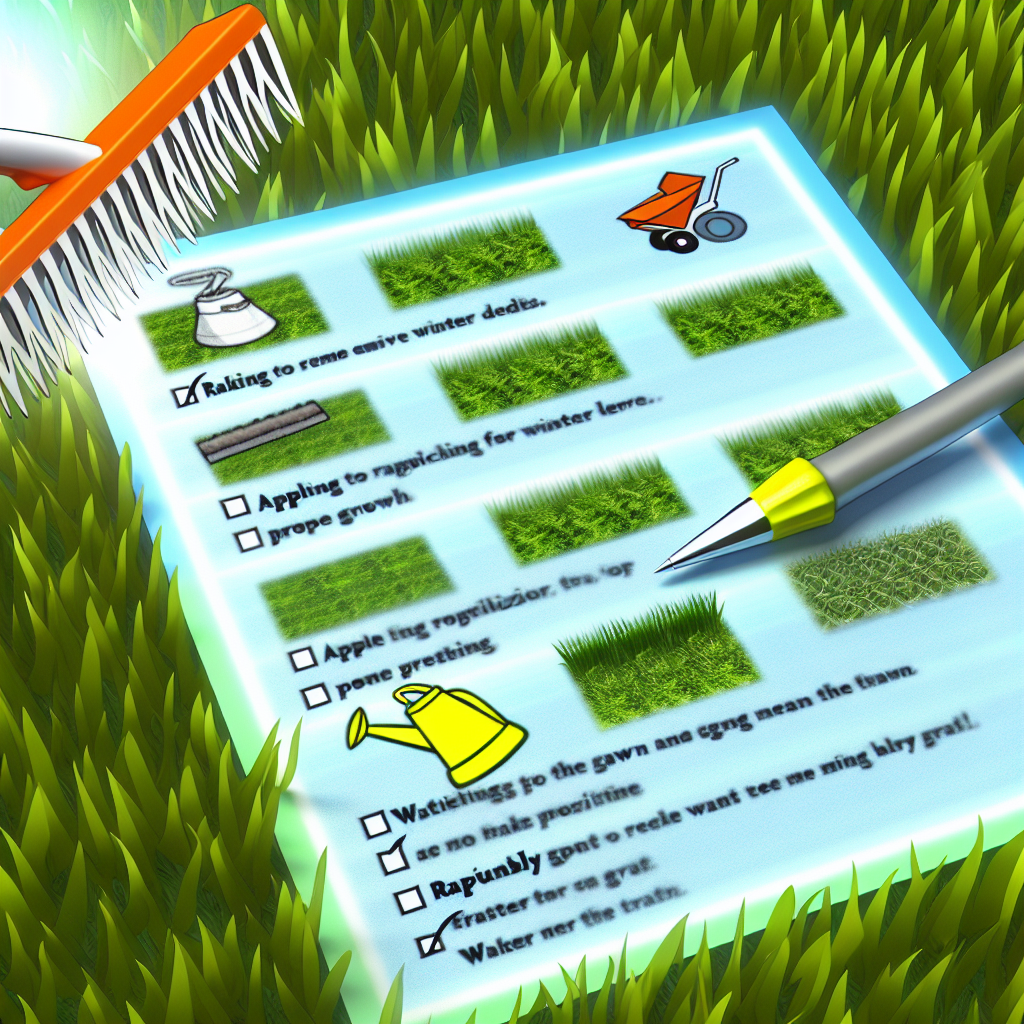Spring Lawn Care Checklist: How to Prepare Your Grass for Growth

As the chill of winter fades and the promise of spring emerges, it’s time to turn your attention to your lawn. A well-maintained lawn not only enhances the aesthetic appeal of your home but also contributes to a healthier environment. Preparing your grass for growth in the spring requires a strategic approach. This article provides a comprehensive checklist to ensure your lawn thrives throughout the growing season.
Understanding Your Lawn’s Needs
Before diving into the specifics of lawn care, it’s crucial to understand the unique needs of your grass. Different grass types have varying requirements, and knowing what type of grass you have will guide your care routine. Common types include:
- Bermudagrass
- Fescue
- Kentucky Bluegrass
- Ryegrass
Each of these grasses has specific needs in terms of sunlight, water, and nutrients. Identifying your grass type will help tailor your spring lawn care efforts effectively.
Essential Spring Lawn Care Tasks
1. Raking and Debris Removal
Start by thoroughly raking your lawn to remove leaves, twigs, and other debris that accumulated over the winter. This process not only clears the surface but also helps to break up any thatch—a layer of dead grass and roots that can prevent water and nutrients from reaching the soil.
2. Aeration
Aeration is a critical step in promoting healthy grass growth. By perforating the soil with small holes, you allow air, water, and nutrients to penetrate the grass roots. This process helps alleviate soil compaction, which is common after winter. According to a study by the University of Maryland, aerating your lawn can increase root growth by up to 25%.
3. Fertilization
Spring is the ideal time to fertilize your lawn. A balanced fertilizer will provide essential nutrients that promote robust growth. Look for a fertilizer with a high nitrogen content, as nitrogen is crucial for leaf development. The Lawn Institute suggests applying 1 pound of nitrogen per 1,000 square feet of lawn.
4. Overseeding
If your lawn has bare patches or thin areas, overseeding can help. This involves spreading grass seed over existing grass to thicken the lawn. Choose a seed mix that matches your existing grass type for the best results. Overseeding in the spring ensures that new grass has ample time to establish before the heat of summer.
5. Weed Control
Weeds can quickly overtake a lawn if not managed properly. Apply a pre-emergent herbicide in early spring to prevent weed seeds from germinating. For existing weeds, a post-emergent herbicide can be used. Be sure to follow the manufacturer’s instructions to avoid damaging your grass.
Watering and Mowing Tips
Proper watering and mowing are essential components of spring lawn care. Water your lawn deeply but infrequently to encourage deep root growth. Aim for about 1 inch of water per week, including rainfall. When mowing, set your mower blades to a higher setting to avoid cutting the grass too short, which can stress the plants.
Conclusion
Preparing your lawn for spring growth involves a series of strategic steps that cater to the specific needs of your grass type. By raking, aerating, fertilizing, overseeding, and controlling weeds, you set the stage for a lush, healthy lawn. Remember to water and mow appropriately to maintain your lawn’s health throughout the season. With these practices in place, your lawn will not only look beautiful but also contribute to a healthier environment. Embrace the spring season with confidence, knowing that your lawn is ready to thrive.












